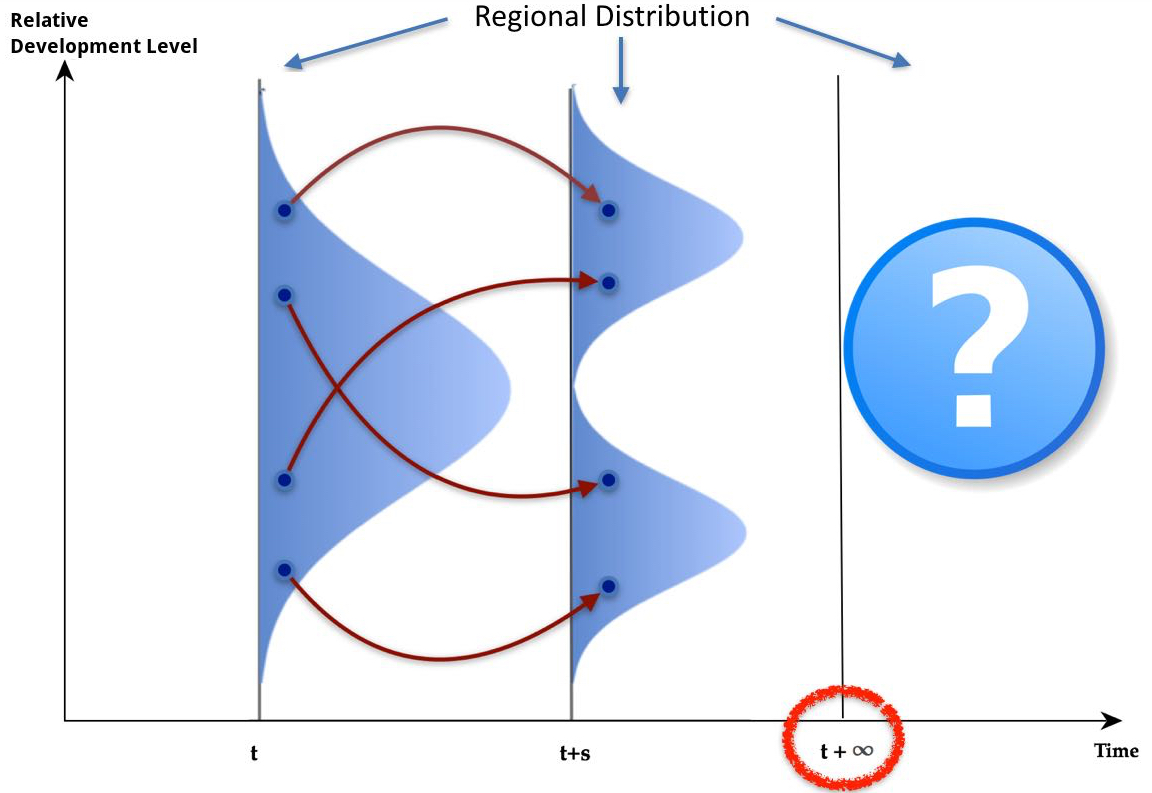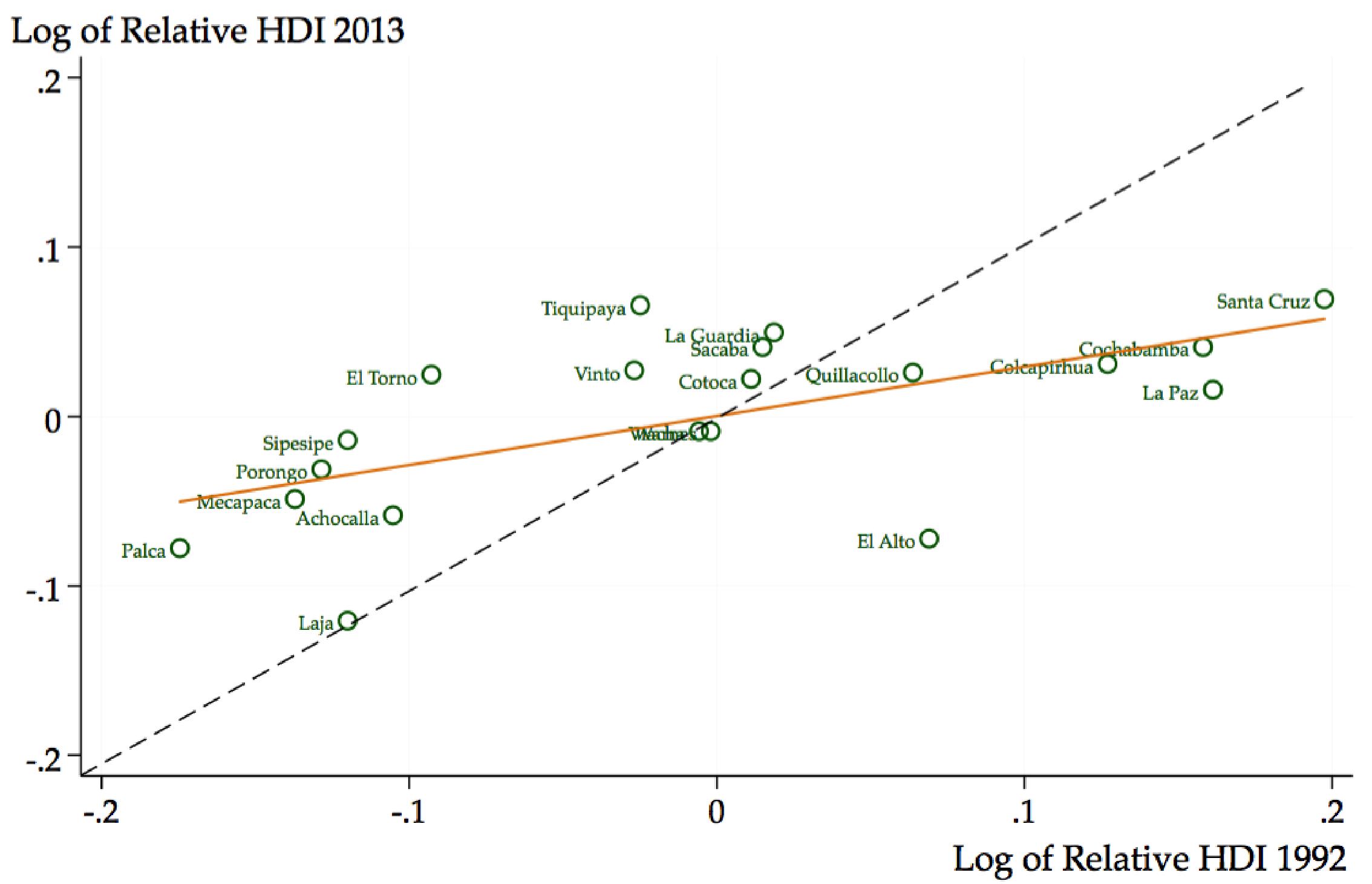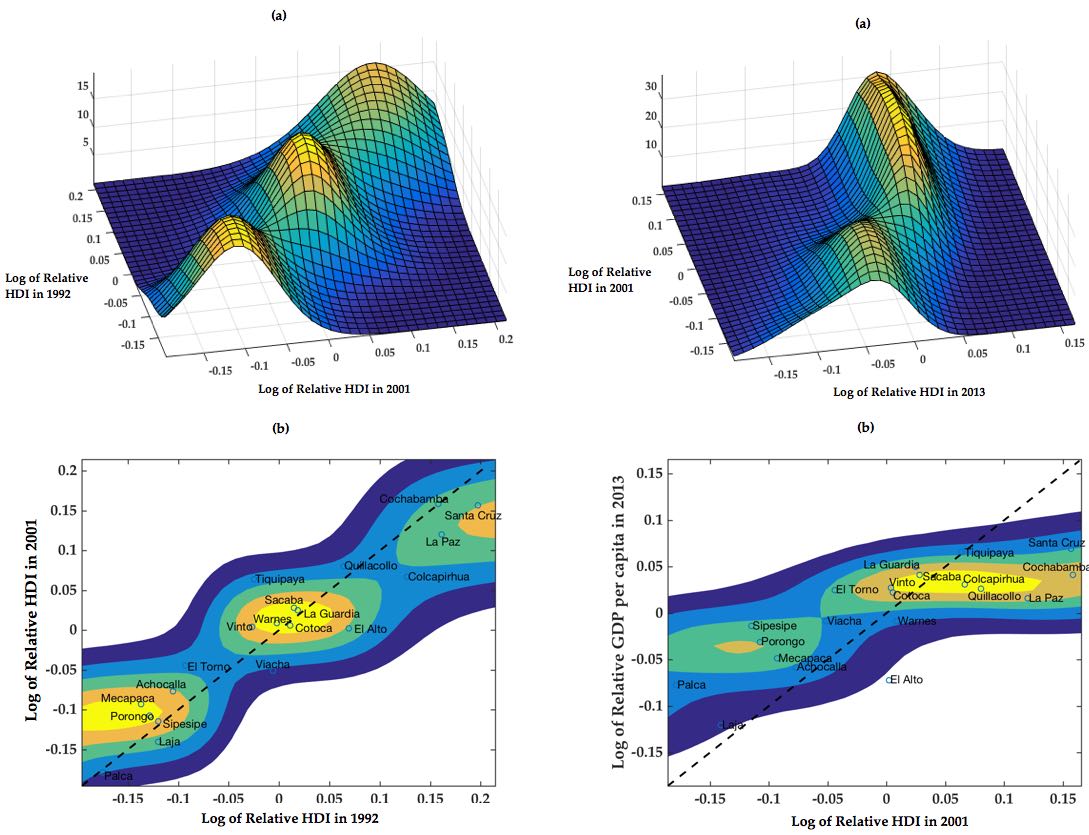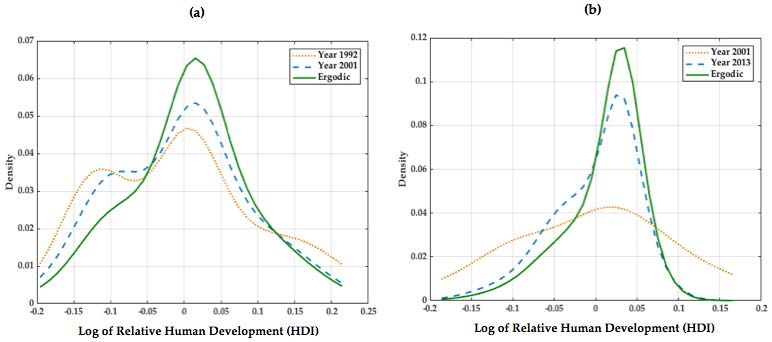class: center, middle, inverse, title-slide # On the Distribution Dynamics of Human Development: ## Evidence from the Metropolitan Regions of Bolivia ### Carlos Mendez<br /><a href="https://carlos-mendez.rbind.io" class="uri">https://carlos-mendez.rbind.io</a><br /><br />Graduate School of International Development<br />Nagoya University ### Prepared for the November Meeting of the Japan Society for International Development<br /><br />[ Slides available at: <a href="https://bit.ly/jasid2018" class="uri">https://bit.ly/jasid2018</a> ] --- # Motivation and Main Objective - Bolivia has experienced fast urbanization and metropolization in last decades: - By 2013, 46 % of the population are concentrated in 20 metropolitan regions - Out of 339 regions/municipalities, that is just under 6 % !!! -- - Study the evolution of human development disparities across the main metropolitan regions of Bolivia 1. In a context of slow economic growth: 1992-2001 period 2. In a context of fast economic growth: 2001-2013 period -- # Methods and Data - Nonparametric density estimation methods: Distribution dynamics framework (Quah 1996; Johnson 2005). - Human Development Index of a sample of 20 main metropolitan regions for the years 1992, 2001, 2013 (UNDP, 2016). --- # Results 1. An **"average" tendency towards regional convergence** driven by two forces: - Forward mobility of the less developed regions - Backward mobility of the more developed regions. -- ## Further insights from the distribution dynamics framework: 1. **Regional heterogeneity matters**, let's investigate beyond the "average" 2. **Clustering dynamics** notoriously different across growth regimes: - Slow growth period: three separate clusters of regions - Fast growth period: fusion/merge between the central cluster and the high-development cluster 3. **The long-run (equilibrium) distribution** of human development in Bolivia is quite **sticky and assymetric at its left tail** - In equilibrium, least developed regions are still relatively far from achieving complete convergence. - Implication: **Focalization of policies** at the cluster level --- class: middle # Outline of this presentation 1. Key insights from the distribution dynamics framework - Go beyond the "average" - The dynamics of the entire distribution provide new valuable information: - nonlinear convergence - convergence clusters - long-run equilibrium 2. Overview of results - "Average" tendency towards convergence - Clustering dynamics across growth regimes and nonlinear convergence - Sticky and assymetric distribution of human development in the long run 3. Concluding remarks --- class: center, middle # Insights from the distribution dynamics framework **Go beyond the "average" regional analysis** **The dynamics of the entire distribution provide new valuable information: nonlinear convergence, convergence clusters, long-run equilibrium** --- class: center ## Nonlinear convergence, convergence clusters, long-run equilibrium  Source: Adapted from Quah, D. (1996) [Twin peaks: growth and convergence in models of distribution dynamics.](https://www.jstor.org/stable/2235377?seq=1#metadata_info_tab_contents) The economic journal, 1045-1055. --- class: center, middle # Overview of the results **"Average" tendency towards convergence** **Clustering dynamics across growth regimes and nonlinear convergence** **Sticky and assymetric distribution of human development in the long run** --- class: center ## An "average" tendency towards regional convergence driven by forward and backward mobility  --- class: center middle ## Clutering dynamics across growth regimes and nonlinear convergence  --- class: center middle ## Sticky and assymetric distribution of human development in the long run  --- class: center, middle # Concluding remarks --- class: middle ## Regional heterogeneity matters - Go beyond linear average analysis - Study the dynamics of the entire regional distribution - Recent advances in nonparametric econometric methods may prove useful -- ## Focalization of policies - Convergence clusters help us identify regions with similar challenges - Call for better coordination of regional policies and regional governments -- ## Further research - Analysis of the determinants of the human development index: health, education, and income - The role of geographical neighbors in accelerating or decelerating convergence - Formal analysis of how the regional distribution of human development changes with export commodity prices --- class: center, middle # Thank you very much for your attention https://carlos-mendez.rbind.io Slides available at: http://bit.ly/jasid2018 Paper available at: http://bit.ly/jasid2018paper